Delve into the dynamic landscape of Net Promoter Score (NPS)—a prime indicator that measures customer loyalty, satisfaction, and enthusiasm about your brand. In the realm of hospitality, an NPS score of 50 signifies an applaud-worthy feat, while in telecom, a score of 30 is held high. However, there’s no ‘one-size-fits-all’ in defining a good NPS.
Let’s dissect this:
- An NPS score quantifies the willingness of your customers to recommend your brand or services to others.
- Scores range from -100, indicating that all customers are detractors, to +100, indicating all are promoters.
The significance lies not only in securing a good NPS score but in utilizing it as a catalyst for augmenting customer experience. With the Plerdy tool, you can efficiently optimize this experience, driving your NPS northwards—strengthening your customer base, one promoter at a time.
Remember, a healthy NPS score doesn’t only reflect your current standing; it fuels your roadmap to exceed customer expectations, engendering trust and loyalty. In essence, an optimized NPS—brought about by the confluence of understanding, action, and reassessment—paves the path for sustainable growth. Step into this exciting journey and explore the magic of NPS with Plerdy today!
What is NPS?

The Net Promoter Score (NPS) stands as a stellar gauge of customer satisfaction and brand loyalty. Cast in scores between -100 to +100, it offers a transparent snapshot of how your business is doing from a customer perspective.
For instance, if we journey through the logistics sector, a good NPS score could sit comfortably at 25, whereas in the e-commerce industry, brands often aspire to reach scores of 60 or above. No universal “good” exists—context is king.
The NPS framework is fairly straightforward:
- Customers are asked one key question: “On a scale of 0-10, how likely are you to recommend our company to a friend or colleague?”
- Promoters (9-10), Passives (7-8), and Detractors (0-6).
- The NPS is then calculated by subtracting the percentage of Detractors from the percentage of Promoters.
Navigating the NPS landscape isn’t about mere number-crunching—it’s about channeling insights into action, transforming customer feedback into fuel for growth. A healthy NPS signifies not just satisfied customers, but promoters—those who will champion your brand, amplify its reach, and drive its success.
In essence, NPS serves as both a compass and a catalyst. It orients your business towards customer-centricity, and propels you to continually elevate the customer experience. It’s how you use the numbers. That’s the magic of NPS. Take the leap, embrace the journey, and witness your customer satisfaction—and your brand—thrive.
What is a Good NPS Score?
Unpacking the concept of a ‘good’ Net Promoter Score (NPS) uncovers layers of context, industry norms, and individual business goals. In the bustling realm of software services, brands aim for an NPS of 30 or above, while in the retail industry, a score of 50 or more is often lauded.
Here’s the breakdown:
- NPS measures the propensity of customers to recommend your business, hence, higher scores translate into more promoters.
- Ranging from -100 to +100, your score is a result of subtracting the percentage of detractors from that of promoters.
- ‘Good’ is relative—comparing your score with industry peers offers valuable perspective.
Beyond the number, the beauty of NPS lies in its ability to drive action—turning insights into initiatives that boost customer satisfaction and loyalty. Moreover, a solid NPS score isn’t just a nod to your current standing—it propels your trajectory towards continually exceeding customer expectations and transforming promoters into brand ambassadors.
It’s not merely about aiming for a ‘good’ score—it’s about embedding the principles of customer-centricity in your business operations. It’s about celebrating promoters, understanding detractors, and moving passives towards becoming advocates for your brand.
In essence, NPS isn’t a passive score—it’s an active tool that sparks dialogue, incites action, and fuels growth. So, leverage NPS as more than a number—embrace it as an instrument that tunes your brand to the symphony of customer satisfaction and loyalty. Dive into the NPS journey and let your business ride the wave of customer-centric growth.
Absolute and Relative NPS

The power of the Net Promoter Score (NPS) shines not only in its simplicity but in its adaptability. The NPS, a reflection of customer satisfaction and loyalty, transforms into two distinct entities when observed through different lenses—absolute NPS and relative NPS.
Absolute NPS is your raw, unfiltered score, a measure of the degree to which your customers are ready to recommend your business. For instance, a software company might take pride in an NPS of 35, while an e-commerce platform might aim for the stars with a target score of 60.
On the other hand, relative NPS is where context meets the score. Here, your score finds its place on a broader scale, benchmarked against competitors or industry averages. In the health care industry, for example, an absolute NPS of 10 might seem low, but when considering the industry average hovers around 15, it’s suddenly not too shabby.
Distinguishing between absolute and relative NPS is crucial:
- Absolute NPS indicates your brand’s innate customer loyalty status.
- Relative NPS provides a broader industry perspective, highlighting your position in the market.
But remember, the NPS is not a trophy to be won—it’s a compass guiding your journey towards amplified customer satisfaction. It’s about using these numbers, absolute or relative, as a springboard to foster stronger relationships, to boost the number of promoters, and to continually enhance the customer experience.
So, gear up for a more informed, nuanced approach to NPS. See beyond the numbers, act on the insights, and ride the wave of customer-centric growth. Make the most of your NPS—both absolute and relative—and watch your business flourish.
How to Calculate NPS?
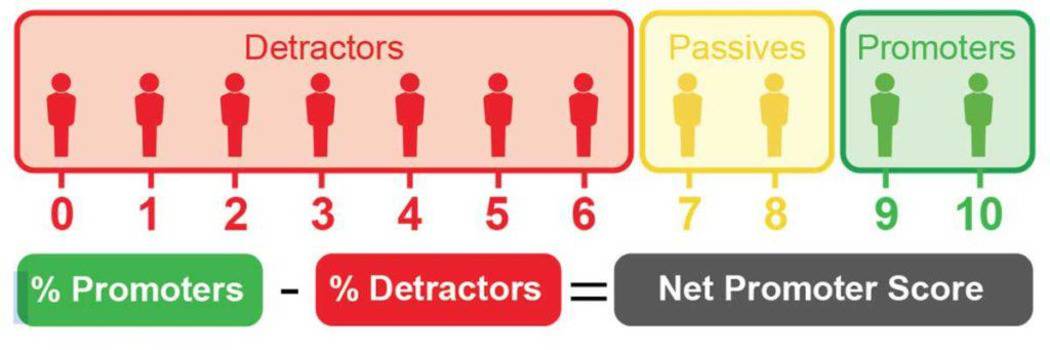
Calculating Net Promoter Score (NPS) paints a vibrant picture of your brand’s customer satisfaction landscape. The process is as follows:
In the first step, clients are asked a pivotal question: “On a scale of 0-10, how likely are you to recommend our company to a friend or colleague?” You can classify them as either Promoters (9-10), Passives (7-8), or Detractors (0-6) based on their responses.
The key to calculating your NPS is straightforward:
- Determine the percentage of promoters — the loyal enthusiasts who will keep buying and refer others.
- Figure out the percentage of detractors — the unhappy customers poised to damage your brand through negative word-of-mouth.
- Subtract the percentage of detractors from the percentage of promoters — this difference gives you the NPS.
The calculation formula itself looks like this:
NPS score = % promoters – % critics
For example, if you’re running a subscription box service and after surveying 200 customers, you find 100 promoters, 50 passives, and 50 detractors. The calculation would be [(100/200)*100] – [(50/200)*100] which yields an NPS of 25.
NPS is a resource, not a statistic. A high NPS indicates a greater number of promoters who are loyal to your brand and likely to bring in new customers. On the flip side, a low NPS shows room for improvement and a chance to turn detractors into promoters.
In the end, NPS acts as a bridge — connecting customer sentiment to actionable insights. So dive in, crunch those numbers, and gear up for a journey fueled by customer satisfaction. Unleash the power of NPS and watch your brand thrive.
Main Factors that Affect NPS Score
There are a variety of factors that influence consumer evaluation. They may vary depending on the company’s industry – we will tell you about the general ones for all categories. There are 6 of them:
- Level of customer support. Prompt, polite, and attentive resolution of customer problems and questions with the help of technical support, social networks, and other forms of communication is a factor that can correct even the company’s shortcomings and malfunctions. If such support is missing or not appropriately provided, the factor can negate even the best quality services.
- Product performance. This includes relevance, meeting customer expectations and requirements, practicality, value for money, and other specific factors for your niche. For example, for some types of business, the list can be supplemented by the speed of delivery.
- Competitiveness. The number of opponents directly affects the percentage of positive evaluation. The more companies that provide a similar product, the more difficult it is to increase the NPS score. In areas with very few competitors, users are more satisfied with the product.
- Brand reputation. It affects customers’ opinions from the very beginning – from the moment of ordering or choosing a product. It determines the mood with which a person comes to you.
- Safety. The protection of personal data, the absence of leakage, and the guarantee of security significantly increase the level of trust in the company.
- The quality and speed of the site. This also includes poor integration with other systems. Such an inconvenience in use can significantly change the client’s attitude towards the company and the product.
By eliminating the main shortcomings, you improve customer relations with the company and provide yourself with a higher NPS score.
Why Should I Choose Plerdy to Get NPS Score?
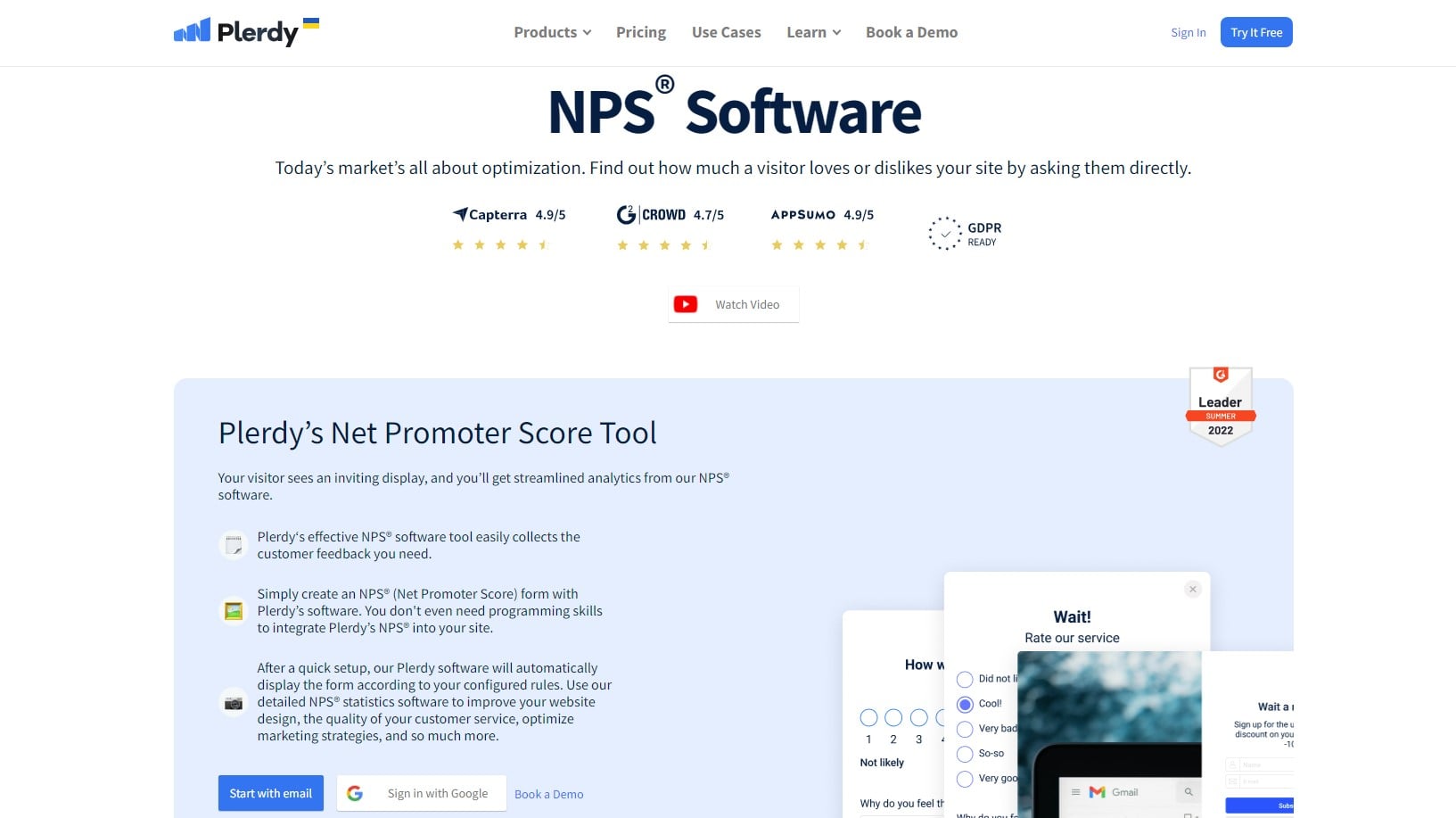
By hosting an NPS poll from Plerdy on your page, you get more than just the standard option to choose an answer. The functionality of this tool includes the following facets:
- Setting up polls. You can customize the questions for yourself change the interface, taking into account the specifics of the brand and corporate style design.
- Automated calculation. Get automatic real-time index calculation.
- Change monitoring. To avoid the backlash, you can create surveys to let visitors know how comfortable the new features are.
- Convenient reports. Visual reports with diagrams will show at what stage something went wrong and why users left negative or passive feedback.
All data is collected automatically. You can place a Net Promoter Score survey at different funnel stages and improve your understanding of your customers.
What is the Good NPS Score by Industry?
As already mentioned, the factors influencing NPS depend on the scope. Like the indicators themselves, what is suitable for one niche will only contribute to losses for another. What are the features of each of the directions? Let’s look at benchmarks.
IT Score

IT is about providing computer services. This includes computer services related to data storage and cloud platforms based on artificial intelligence. The NPS score in this area is 42%, 22%, and 3% – the maximum, average, and minimum, respectively.
Marketing Score
B2B companies provide marketing strategy development, data analysis, and influencer marketing project management. The maximum, average, and minimum NPS score in a large gap is 51%, 29%, and 2%.
Healthcare Score

The category includes:
- Medical institutions.
- Intermediary companies between the patient and the hospital.
- The production of specialized equipment and medicines.
The maximum, average, and minimum NPS score is 66%, 41%, and 19%.
E-commerce Score
E-commerce companies are B2B and B2C companies whose scope is to provide commercial transactions through digital channels. These are online stores and websites with services. The maximum NPS score is 60%, the average is 39%, and the minimum is 19%.
Food Score

The industry combines two categories of companies – direct producers and online platforms for ordering food. The maximum, average, and minimum NPS score is 58%, 29%, and 13%.
Finance Score
Financial services and finance-related companies include investing, mortgage refinancing, and retirement solutions. The maximum, average, and minimum NPS score is 60%, 39%, and 21%.
Education Score
Education refers to educational institutions (including commercial platforms and schools) and educational research programs. The maximum, average, and minimum rates are 64%, 45%, and 29%.
Entertainment Score

A comprehensive group includes all leisure and entertainment companies – from animation studios to event agencies. The maximum, average, and minimum NPS score is 39%, 21%, and -2%.
Consulting
They are engaged in constructing buildings, roads, bridges and often also in the design and selection of employees. The industry with the lowest rates is -9%, -1%, and -22%.
Top-10 Companies With Good NPS Score
Companies with a high percentage of NPS are the standard to be guided by. Consider the world’s top companies with a positive assessment.
Samsung
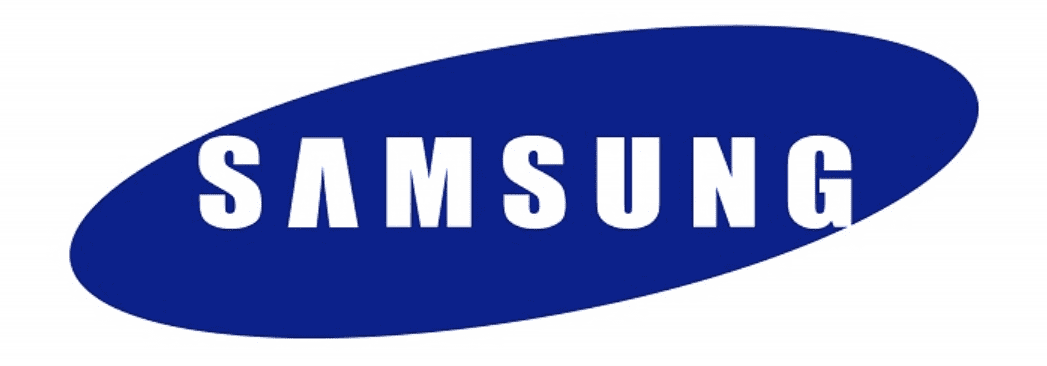
The South Korean conglomerate has an NPS of 67%. The corporation is divided into smaller conglomerates and is present in several industries. The most famous is electronics, followed by others: advertising, entertainment, information technology, construction.
Apple iPhone

Apple is an American technology company with an NPS of 63%. The primary industries in which the company occupies a significant place are electronics, software development, financial. The company is engaged in developing and creating technology and programs and is represented in corporate venture capital.
Costco Wholesale Corporation
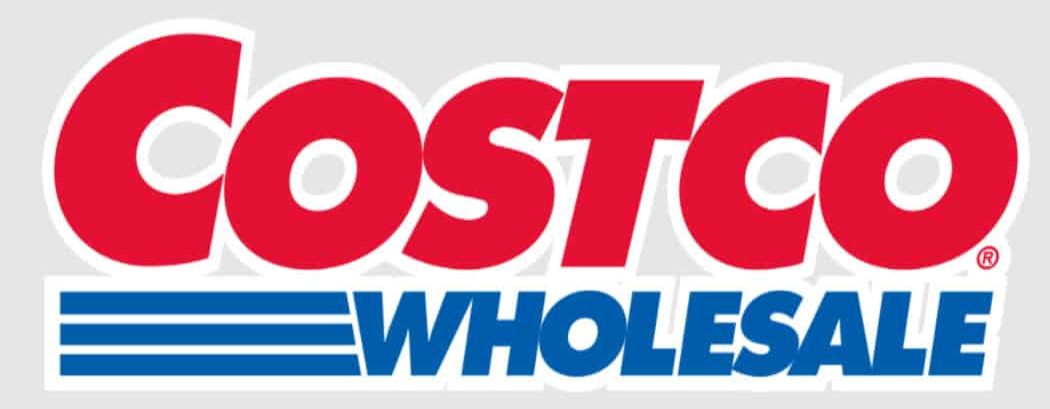
Costco has a high NPS of 79% in consumer goods and retail. A narrowly focused company that retails and wholesales high-quality deli, organic products to club members. Marketed in the US, Canada, Mexico, UK, Japan, South Korea, Taiwan, Australia, and Spain.
Google Drive

The world-famous computer technology and software company has an NPS score of 50%. In addition to cloud storage, the company has created applications for Windows and macOS, Android, and iOS. Among its products are also Google Docs, Sheets, and Slides.
YouTube

One of Google’s subsidiaries is a video sharing feed. YouTube an NPS of 59%. As part of the affiliate program, the site hosts not only videos of individuals but also media corporations – for example, the BBC, Vevo, and Hulu. YouTube belongs to the category of Internet companies.
Starbucks

A company with a network of coffee houses also sells fast food and merchandise such as branded cups and thermal mugs. NPS score is 77%. It is part of the food industry.
Asus Tek Computer Inc.

The Taiwanese computer hardware and electronics company ranks 4th in the world in terms of shipments. NPS score – 77%. Products include laptops, motherboards, monitors, projectors, and more.
Nikon
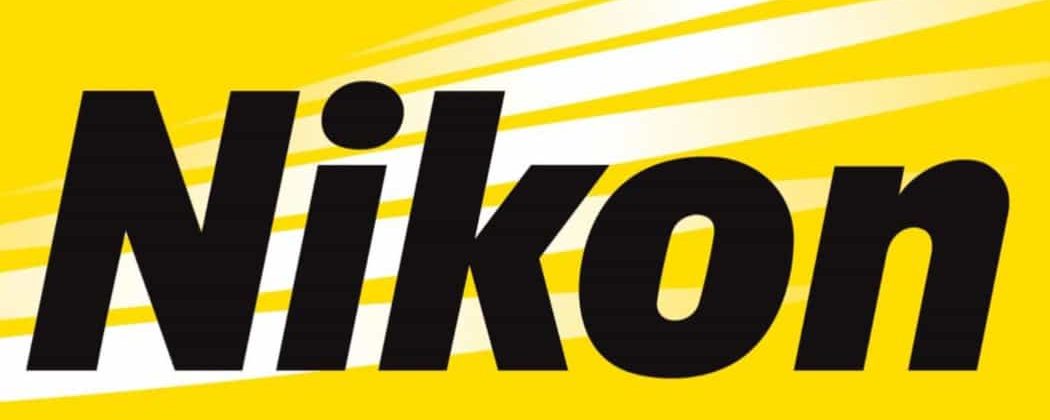
Nikon is a Japanese corporation with a Net Promoter Score of 65%. As of 2017, it was the 8th largest company specializing in optical equipment, cameras, lenses, and imaging products.
WordPress

The hosting service has an NPS score of 73%. The web platform provides free and paid VIP hosting services to more than 40% of website owners. It is part of the software industry.
Walt Disney

Disney is the world’s second-largest media conglomerate, has an NPS score of 73%, and is part of the entertainment industry. In addition to the film and cartoon production studio also owns theme parks, the ABC broadcast television network, cable channels, etc.
Conclusion
Wrapping up our insightful journey through the intricacies of Net Promoter Score (NPS), it’s clear – NPS is more than just a metric. It’s a beacon of customer satisfaction and loyalty, a mirror reflecting your brand’s perception in the customer’s eyes. A ‘good’ NPS score varies across industries, regions, and over time – fluctuating on the scales of context and comparison. For instance, a tech giant like Apple might bask in an NPS of 47, while eCommerce titan Amazon sports a score of 25. It’s not about racing to a universal ‘good’ score; instead, it’s about consistently striving to exceed your own benchmarks, year after year.
Remember, your promoters aren’t just numbers – they’re your brand’s advocates, the driving force propelling your reputation forward. They are the sources of positive word-of-mouth, enhancing your brand’s standing in this competitive marketplace. Tracking NPS helps you identify your promoters, learn from your detractors, and keep an ear to the ground on customer sentiment.
Ready to take your customer experience to the next level? Harness the power of Plerdy, a robust tool for SEO & UX analysis. It’s about time you dive deep into your customer data and make impactful changes that drive your NPS upwards! Get started with Plerdy today – because in the journey of customer satisfaction, every point counts.
